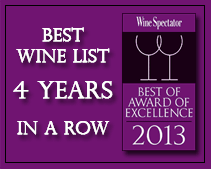Merlot is by far the most widely planted grape of the entire Bordeaux region.
January 30, 2011
Philippines wine supplier Manila wine shop discusses wine by the grape variety Merlot.
Merlot
Merlot is to the American wine consumer in the 1990s as “burgundy” was in the 70s: the new generic red. A “boom” in wine consumption, combined with the consumer trend to move away from generic wine blends and into varietals, stimulated plantings of “new,” as well as “proven” wine grapes in California during the ’70s. Merlot did not appear as a California varietal label until the end of the decade and was not a big seller until the end of the ’80s. Less than 2,000 acres existed in California in 1985; there are over 50,000 acres in 2003.
Merlot is by far the most widely planted grape of the entire Bordeaux region and third, behind carignan and grenache as the most planted black variety in France. However, it has a starring role in only one region, historically, north of Bordeaux’s Gironde River, where it is the basis of the wines of St. Emilion and Pomerol. Château Petrus, which has risen in consumer stature in the past three decades, is over 90% Merlot. South of the Gironde, however, merlot usually plays a supporting role in typical Medoc blends with cabernet sauvignon and cabernet franc. Château Palmer in the medoc is about 60% Merlot.
Because merlot ripens at least a week earlier than either cabernet variety, it is “vineyard insurance” where rains are a factor at harvest. The best quality merlot grows in rocky, arid ground, but is fairly adaptable and grows better than the cabernets in clay-based soils, even in damp, cool climates. Since merlot both buds and flowers early, growers’ main worry is susceptibility to shatter or coulure, brought about by frost, rain, or early heatwaves in the Spring. The berry of merlot is relatively thin-skinned and somewhat prone to rot.
Merlot is moderately vigorous in vine growth, but must sometimes be reined in from setting too large of a crop by judicious pruning, often followed weeks later by cluster thinning. Merlot on fertile soil may produce eight tons per acre, but best fruit quality is gained if the crop is kept at six tons per acre or less. Merlot’s tendencies towards both shatter and over-cropping are paradoxical. Careful selection of both clone and site can avoid this problem, as shatter is more serious in colder climates.
While its flavor profile is similar to Cabernet Sauvignon1, Merlot tends to be less distinctive and slightly more herbaceous overall in both aroma and taste. Ripeness seems critical; both under ripe and overripe grapes lean away from fruit and towards herbaceousness. Merlot has slightly lower natural acidity than Cabernet and generally less astringency, therefore usually a more lush mouth-feel.
The most frequent, but not exclusive, aromas and flavors typically found in Merlot include:
Typical Merlot Smell and/or Flavor Descriptors
Varietal Aromas/Flavors: Processing Bouquets/Flavors:
Fruit: currant, black cherry, plum Oak (light): vanilla, coconut, sweet wood
Floral: violet, rose Oak (heavy): oak, smoke, toast, tar
Spice: caramel, clove, bay leaf, green peppercorn Bottle Age: truffle, mushroom, earth, coffee,leather, cedar, cigar box
Herbal: bell pepper, green olive .
Earlier than Cabernet Sauvignon to mature in bottle, Merlot is held in higher esteem by wine drinkers than by wine collectors.
Syrah is richer and darker, Pinot Noir lighter and more velvety, but Merlot has become the darling red wine. Is it because the consumer finds Merlot easy-to-drink or is it perhaps, because
Source: http://www.winepros.org/wine101/grape_profiles/merlot.htm
Are these articles useful for enhancing your wine and dine experience in the Philippines. Do they also help you with travel, leisure, vacation, dining out, nightlife and other leisure activities plans in Manila and other major cities of Philippines? Yats Restaurant hopes to provide you with ample information so you can plan your trips to Pampanga Angeles City Clark Freeport Zone whether you are travelling from Manila or other Asian countries such as Hong Kong, Shanghai, Singapore, Malaysia or Korea.
Restaurant reservations in Manila Philippines, planning of menu, selection of wine for dinner and booking a private function and event in Angeles City Clark Freeport Zone can all be handled. Yats Restaurant and Wine Bar has been regarded by many to be the premier restaurant north of Manila Philippines. Its 3000-line award-winning restaurant wine list has kept many wine lovers happy dining in this restaurant in Angeles City Clark Philippines for over a decade.
Yats Restaurant and Wine Bar was built by Hong Kong-based Yats International in 2000 to provide a world-class cozy fine dining restaurant, business meeting facilities and venues for private dinners and functions in Pampanga Angeles City Clark Freeport Zone. Pampanga Angeles City Clark Philippines was selected for this restaurant because of safety, clean air, absence of traffic and proximity to Manila and Subic.
For comments, inquiries and reservations, email Restaurant@Yats-International.com or call these numbers:
(045) 599-5600 0922-870-5178 0917-520-4401
Http://www.YatsRestaurant.com
Getting to this fine dining restaurant of Angeles City Clark Freeport Zone Pampanga Philippines
How to get to this fine-dining restaurant in Clark Philippines? Once you get to Clark Freeport, go straight until you hit Mimosa. After you enter Mimosa, stay on the left on Mimosa Drive, go past the Holiday Inn and Yats Restaurant (green top, independent 1-storey structure) is on your left. Just past the Yats Restaurant is the London Pub.









